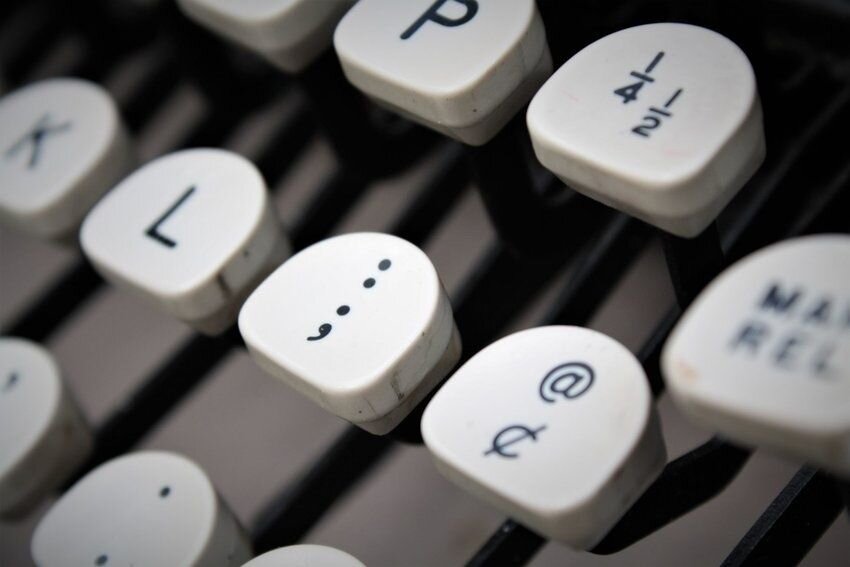Semicolons are one of the most misunderstood and under-utilized weapons in our grammar arsenal. An important thing to understand about the semicolon is that it’s a non-essential punctuation mark. Unlike the period and the comma, which serve crucial purposes, the semicolon is a luxurious option; it's used to embellish sentences and allow the writer to express herself more meaningfully.
The secret behind the semicolon is obvious. What does a semicolon look like? It appears to be an amalgamation of a period and a comma. This gives a giant clue toward how to use it — not as a period or a comma, but as something in between.
There are three main ways a semicolon is used, as well as a couple of guidelines. Read on, and you’ll be casually (and correctly) throwing around semicolons before you know it.
Joining Sentences
The first, and primary, use of a semicolon is connecting two sentences that are part of the same thought. Crucially, in this usage, the two sentences have to be just that: sentences. They must be independent clauses that are capable of standing on their own.
Example:
The blue whale is the largest animal to have ever existed. It's an aquatic mammal.
Now, let’s jazz this up with a semicolon:
The blue whale is the largest animal to have ever existed; it's an aquatic mammal.
As you can see, the two thoughts exist independently of each other (blue whales are big, and blue whales are ocean-dwelling mammals), however, they are linked. The semicolon brings them together as one sentence.
This brings us to the first “don’t.” Don’t use a comma to do a semicolon’s job. When two independent clauses are joined with a comma, this is known in the grammatical world as a "comma splice,” and it's frowned upon by the grammar elite.
The second “don’t” pertains to something you might have already spotted. Notice how the capital "I" from the “It's an aquatic mammal” sentence became lower case when we added the semicolon? That's because the two sentences were joined into one. Don’t use a capital letter after a semicolon. The only time to do this is when the semicolon is followed by a proper noun (a name of a person or place).
The third “don’t” is: don’t use a conjunction after a semicolon. A conjunction (and, or, but, etc.) can join two sentences together with a comma, but not a semicolon.
Example:
The blue whale is the largest animal to have ever existed, and it is an aquatic mammal.
The comma and the conjunction are performing the job of the semicolon, so there is no reason to use both.
Having said this, the only “do” is somewhat related. Although conjunctions are inappropriate, conjunctive adverbs are quite welcome. Adverbs are “how” words, elaborating on how something is done. A conjunctive adverb can add more richness to a sentence with a semicolon.
Example:
The blue whale is the largest animal to have ever existed; interestingly, it is an aquatic mammal.
Detailed Lists, or Lists That Already Include Commas
Arguably simpler than the first use, but far less common, semicolons can be used in certain types of lists.
Example:
My favorite U.S. cities are New Orleans, Louisiana; Los Angeles, California; Denver, Colorado; and Paris, Texas.
Here, the semicolons are doing the traditional job of commas, because the commas are already in use in the city names.
Here's a more complex example:
On my date last night we saw that new rom-com, accompanied by extra buttery popcorn, Skittles, and a Slushie; after that we somehow had room for a full meal, including salmon linguine and fudge cake; to finish we stared at the moon all night, which was extra large for this time of year.
This sentence would probably be split up by an editor to make it easier to read, but it is still grammatically correct. Here, commas are employed to add detail to the list items, meaning semicolons were needed to divide the list.
The wink ;)
Grammar traditionalists might have a hard time accepting this as a genuine use, but the final, and most fun, use of a semicolon is in the winky face emoticon. Language rules and norms are at the mercy of common usage and habits. The modern reality is that emoticons and emojis are here to stay.
Photo credit: Franck-Boston/ iStock

